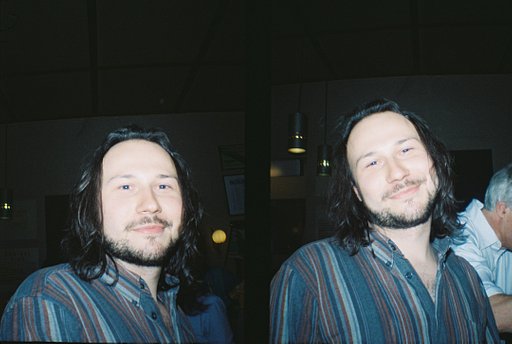What is medium format film or 120 film?
Medium format film (or 120 film) is larger than 35 mm, but smaller than large format (or sheet film.) The terms “120 film” and “medium format film” are pretty much interchangeable nowadays, but you should know that the film is not 120 mm. In fact 120 is simply a reference to the original numbering system used by Kodak. (It was the 20th daylight-loading roll film that Kodak produced.)

120 film is 6 cm wide and different medium format cameras shoot different variations of frame length including 6×4.5, 6×6 and 6×7. Depending on these frame lengths, medium format will give you between 8 – 16 shots per roll.
6×4.5 camera = 16 exposures
6×6 camera = 12 exposures
6×7 camera = 10 exposures
6×8 camera = 9 exposures
6×9 camera = 8 exposures
With medium format film the area of the image is bigger than 35 mm, giving you more detail in your photos and less grain. Medium format cameras are great for professional photographers as well as more serious amateurs, as they remain fairly portable but give a much larger image size than 35 mm.


120 format films can be used with the Diana F+, Lomo Lubitel 166+, Lomo LC-A 120, and many other medium format cameras.
120 film format was originally introduced by Kodak for its Brownie No. 2 way back in 1901. For a long time it was the main format for amateur photographers, however with the popularity of 35 mm in the 1970s, 120 medium format film became a format associated with professionals.
Anything missing?
Can’t find an answer to your question? Or do you have some useful advice to add to one of our courses? We want to build the world’s largest analogue learning space, so please send any further requests or information to school@lomography.com and we’ll take a look!
More Courses
-
What are the different photographic film formats?
The three main types of film format are 35 mm, medium format and large format. More unusual formats also exist such as 110 and 127.
-
What is tungsten film?
Most standard films are daylight-balanced, so they tend to capture the yellow-orange cast from tungsten lights. To address this, tungsten film was created to produce color-correct images taken under artificial lighting.
-
What is 126 film?
126 film was launched by Kodak in 1963 as a way to simplify the process of loading and unloading film into cameras. Its name comes from the negatives’ dimension of 26.5 mm square. Although companies ceased mass production of 126 format around 2007 to 2008, its cartridge is still known and loved today.
-
What is APS film?
Advanced Photo System or APS film was introduced in 1996 as a “high-tech” or modern alternative to the 126 and 110 film formats. It was 24 mm wide and it introduced many innovations, like the ability to choose exposure lengths and print sizes. Production of new APS film was ceased in 2011.
-
What is the difference between panchromatic and orthochromatic film?
Orthochromatic film is made with blue-sensitive silver halide crystals, while panchromatic film adds other chemicals to increase the film’s sensitivity into the green and red parts of the spectrum.
-
What is a half-frame film camera?
Half-frame cameras shoot 18×24 mm photographs on 35 mm film. This means you can take up to 72 images on one single roll and save a lot of film!
-
What are LomoChrome films?
LomoChrome is the name given to Lomography’s experimental film stocks. There are currently four LomoChrome film stocks available: LomoChrome Purple, LomoChrome Turquoise, LomoChrome Metropolis, and LomoChrome Color ‘92.
-
Where to get film developed?
There are a lot of places that can process and develop your 35 mm color negative film such as local drugstores or one-hour photo labs.
-
What is the processing method for Redscale and LomoChrome films?
All Lomography color films are processed using C-41 chemicals. This includes Lomography RedScale XR and our popular range of color-shifting LomoChrome films – LomoChrome Purple, LomoChrome Metropolis and LomoChrome Turquoise





